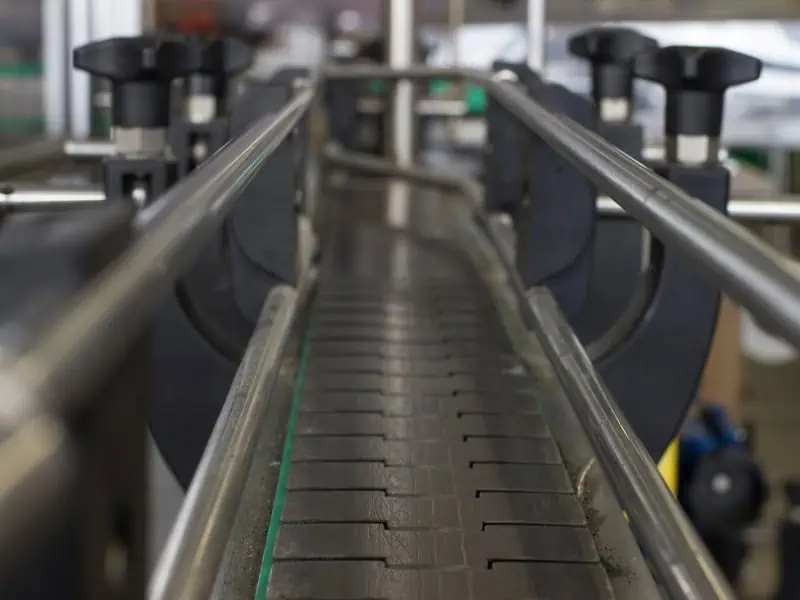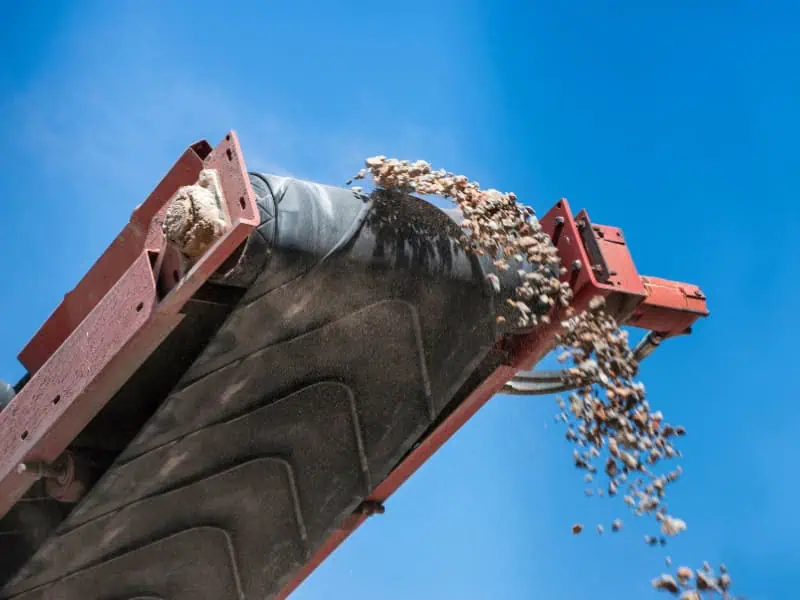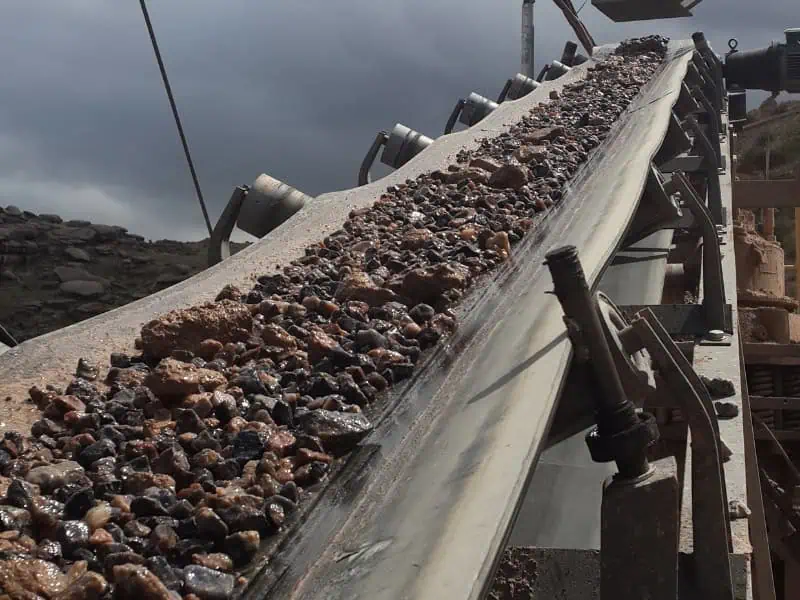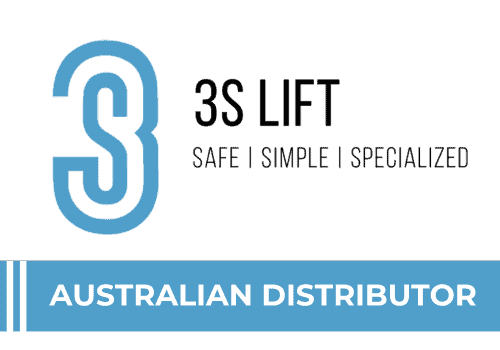Choosing the right conveyor belt types can make or break a heavy-duty operation. From construction to mining, these belts do the heavy lifting. When a system fails, downtime kicks in—and that’s costly. But selecting a belt isn’t as simple as picking one off the shelf. Different materials and designs suit different conditions. Get it wrong, and you could face breakdowns, blowouts, or worse—safety hazards. So, how do you know which type suits your project? And what should you weigh up before locking it in? Understanding the pros and cons of each conveyor belt type helps avoid risk and improve your site’s efficiency. Let’s get stuck in.
How do conveyor belt types affect heavy-duty performance?
Heavy-duty projects often involve abrasive materials, extreme loads, and challenging environments. Not all conveyor belts are built for that. Some materials—like rubber—handle impact better. Others, such as PVC, are great for resisting chemicals but buckle under serious weight. Then there’s steel: strong as nails, but more rigid and harder to install. Here are the different ways materials impact performance:
- Rubber belts wear more slowly under abrasive conditions, especially in dusty quarry environments or demolition sites where sharp-edged debris is common.
- PVC options are lighter and flexible, which suits indoor settings but struggles in wet or high-load conditions.
- Steel cord belts handle high tension but cost more; they’re a fit for continuous, long-haul transport, like at ports or mining corridors.
- Fabric belts offer adaptability for uneven loads, such as agricultural conveyors moving irregular produce or compost.
Matching belt material to the operational environment isn’t a “nice to have”—it’s essential. Choosing wrong can reduce efficiency and even void manufacturer warranties
Why do some conveyor belt types fail under pressure?
Belts don’t just snap without reason. It’s often a design mismatch. If your belt doesn’t match the conditions, failure’s around the corner. For instance, using a lightweight belt in a quarry? That’s asking for trouble. Likewise, belts not rated for temperature swings will crack or deform over time, leading to expensive replacements. Even incorrect tensioning—too tight or too loose—can strain the system. Here are the main causes of failure:
- Poor tensioning causes slippage or stretch, especially when systems stop and start frequently.
- Low-grade materials degrade under heat or chemicals, like in manufacturing plants with oil residues or acidic runoff.
- Belts that are too narrow lead to spillage and blockages, requiring more clean-up and increasing the risk of injury.
- Incorrect speed settings result in excessive belt wear, which can fray edges and damage rollers.
One operator learned this the hard way on a remote jobsite: a misaligned belt caused spillage so severe that they had to stop production for three days. The right type, installed properly, would’ve saved a fortune.

What risks come with choosing the wrong conveyor belt types?
Pick the wrong belt, and the costs aren’t just financial. There’s a snowball effect. A mismatched system leads to more than wear and tear—it invites breakdowns, delays, and even injury. Belts that fail during load transfer can cause material spills, machine jams, or create fall risks for nearby workers. Here are the common risks of using the wrong type:
- Missed project deadlines from downtime—especially on union-regulated sites where overtime cuts into profit margins.
- Higher maintenance costs over time as frequent patch-ups become routine rather than rare.
- Unsafe working conditions from belt misfires, especially where sharp debris is involved.
- Environmental fines from spillage or leakage that enters waterways or violates EPA standards.
If you’re unsure about setup, choosing the right conveyor loading setup can help ensure alignment from the start. Sometimes it’s not the belt that’s wrong—it’s the way it feeds and discharges.
How does belt construction impact long-term reliability?
Belt construction isn’t just about the outer layer—what’s inside matters most. The core (or carcass) dictates how much load the belt can handle and how long it’ll last. Steel cord belts have high tensile strength, making them ideal for long-haul, heavy loads. Meanwhile, fabric-reinforced belts absorb shock and flex well on smaller pulleys. Here are the construction features that boost durability:
- Steel cords reduce stretching and improve long-distance reliability—they’re often used in tunnels and deep excavation belts where load volume never lets up.
- Polyester fabrics resist mildew in wet environments, such as agricultural sorting or recycling centres that deal with organic waste.
- Nylon blends add flexibility and shock absorption, which helps when belts are exposed to frequent start-stop cycles or jagged materials.
- PVC coatings provide chemical and oil resistance, often chosen for food processing or chemical plants.
Good construction means fewer stoppages. One crew swapped to a multi-ply belt with extra abrasion resistance, and it lasted twice as long as their previous setup. Upfront cost? Sure. But it paid off before the quarter was out. When comparing material choices, understanding how belt conveyor material affects performance is crucial—it often determines how long a system can withstand the demands of your site.

Can hiring conveyor belt systems reduce project costs?
Owning isn’t always the best bet. For short-term or specialised jobs, hiring a conveyor system can be smarter. Rental systems often include setup, maintenance, and troubleshooting support. You also get access to newer models without the hefty purchase cost. Whether it’s civil works or demolition, explore conveyor belt hire solutions designed for heavy-duty work to find a system that fits your needs. Here are the benefits of hiring over owning:
- Avoids large upfront investment—ideal when margins are tight or projects are temporary.
- Minimises repair costs with included servicing, letting crews focus on work, not belt alignment or motor issues.
- Scales up or down depending on project load, which suits multi-phase jobs or rolling contract work.
- Lets you trial systems before committing long-term—think of it like hiring a ute before buying the full fleet.
| Factor | Hiring | Owning |
| Upfront Cost | Low | High |
| Maintenance Responsibility | Included in rental | Fully the owner’s responsibility |
| Flexibility | Scalable to project scope | Fixed to owned units |
| Access to Latest Equipment | Yes, with most rental services | Only if upgraded at one’s own cost |
| Downtime Support | Often included via service agreements | Requires in-house or third-party servicing |
| Suitability for Short Projects | Ideal | Often not cost-effective |
Hiring also opens doors to system upgrades mid-project, which you won’t get from a belt you already own.
How do industries decide on the right conveyor belt types?
There’s no one-size-fits-all approach. Industries weigh up materials, terrain, safety regulations, and load profiles. Mining operations often use steel cord or fire-retardant belts. Food processors prefer PVC for hygiene. Waste facilities? They lean into rubber for durability. Decision-makers also look at installation ease, supplier support, and lifespan. Here are the factors industries consider:
- Construction sites need belts that withstand extreme weather, from arid heat to sudden downpours.
- Agricultural projects choose belts that are easy to clean, often modular systems that snap out for hose-downs.
- Logistics prefer modular systems for flexibility when changing product lines or delivery targets.
- Recycling facilities prioritise impact resistance because of varied material types—glass one day, plastic the next.
To meet compliance, many teams align their equipment planning with safe practices for reducing worksite risks, ensuring both safety and regulatory approval before rollout.
Final thoughts
When the pressure’s on, your belt choice matters. Don’t treat it like an afterthought—it’s central to your site’s performance, safety, and efficiency. If you’re facing tight deadlines, heavy loads, or changing conditions, take the time to assess your options. Use the right belt for the job and avoid common missteps. And if you’re not sure where to begin, learn how CH Hoists delivers trusted equipment for projects.




